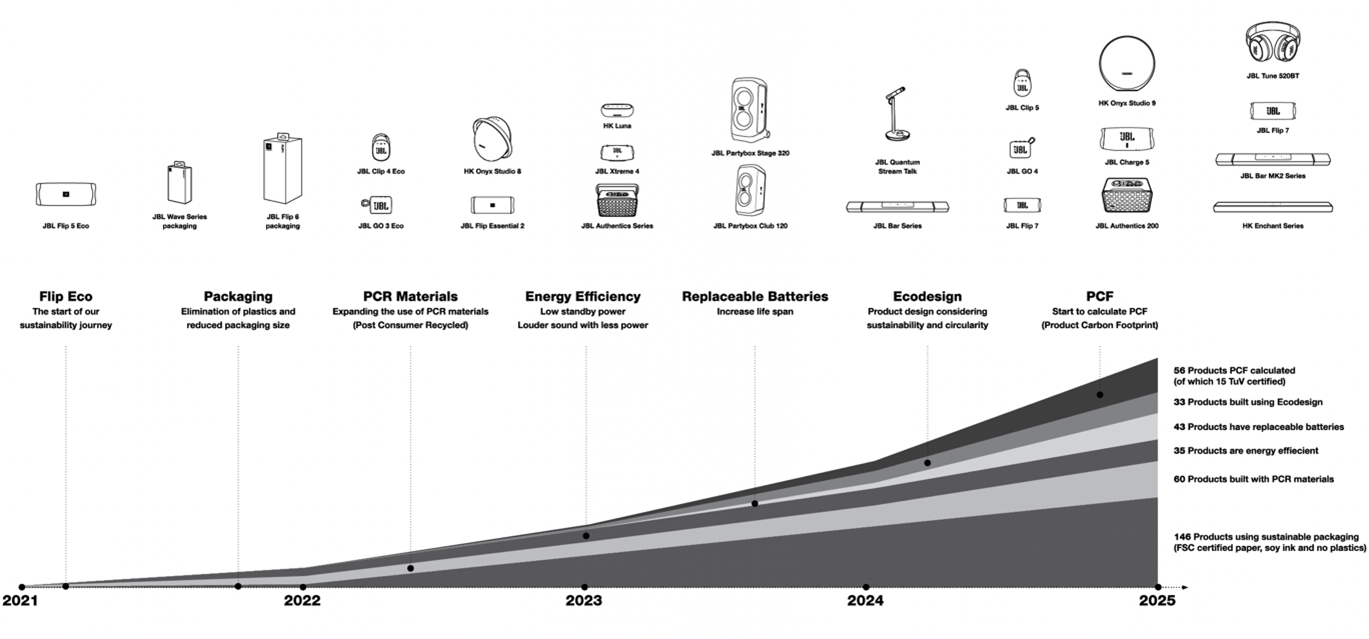
Climate change, resource scarcity, and waste are interconnected challenges. At HARMAN, we approach them holistically with measurable, science-based actions.
HARMAN's climate strategy has evolved from a prior focus on net-zero aspirations and carbon offsetting to a science-based approach rooted in measurable, verifiable reductions. We made this pivot because our stakeholders—customers, regulators, and employees—expect transparent action aligned with the latest climate science. Unlike offset-based neutrality claims, science-based targets (SBTs) provide short- and mid-term milestones that ensure we are reducing emissions in accordance with the Paris Agreement.
This approach strengthens accountability, sharpens our focus on real reductions, and positions HARMAN alongside global peers and our parent company, Samsung, in pursuing rigorous climate action. By embedding SBTs into our business planning, we are making decarbonization not just a long-term promise, but an operational imperative tied to today's decisions, ensuring that climate action is integrated into operations, product design, and supplier engagement

by 2032 from a 2024 baseline—reflecting our commitment to transforming operations, facilities, and energy procurement.

by 2032, also against a 2024 baseline—highlighting our resolve to tackle upstream and downstream impacts across our value chain.
These targets are more than numeric goals—they are operational imperatives that are embedded across our functions, business units, and governance systems.
*all GHG data verified by a 3rd party
Achieving these ambitious GHG reduction targets requires a whole-system transformation. This includes integrating sustainability into capital planning, facility operations, product design, procurement practices, and logistics. Key strategies include transitioning to low-carbon energy sources, increasing efficiency, reducing material intensity, and collaborating closely with suppliers and partners to decarbonize the entire ecosystem.
To meet our GHG reduction targets, HARMAN is executing on a wide range of high-impact initiatives focused on decarbonizing our operations and energy use:
We continually invest in our global operations to achieve the dual goals of environmental stewardship and operational excellence. Across our automotive and manufacturing facilities, we are implementing a series of energy efficiency and sustainability projects that align with our science-based emissions reduction targets and broader environmental stewardship commitments.
Energy and cost savings have been achieved across HARMAN facilities through energy efficiency improvements, including upgrades to lighting, HVAC, and compressors at several sites. For example, in Suzhou, China, the lithium bromide air conditioning system was replaced with magnetic levitation chillers, which are water-cooled only and eliminate the need for gas.
All automotive locations are ISO 14001 certified, reflecting compliance with established environmental management standards. Plans are also in place to achieve ISO 50001 certification, further strengthening our operational approach to energy management. As of 2025, seven out of ten manufacturing sites have completed an alternative energy audit, along with installing Energy Management Systems (EMS), which enables more intelligent monitoring, real-time data collection, and operational optimization.
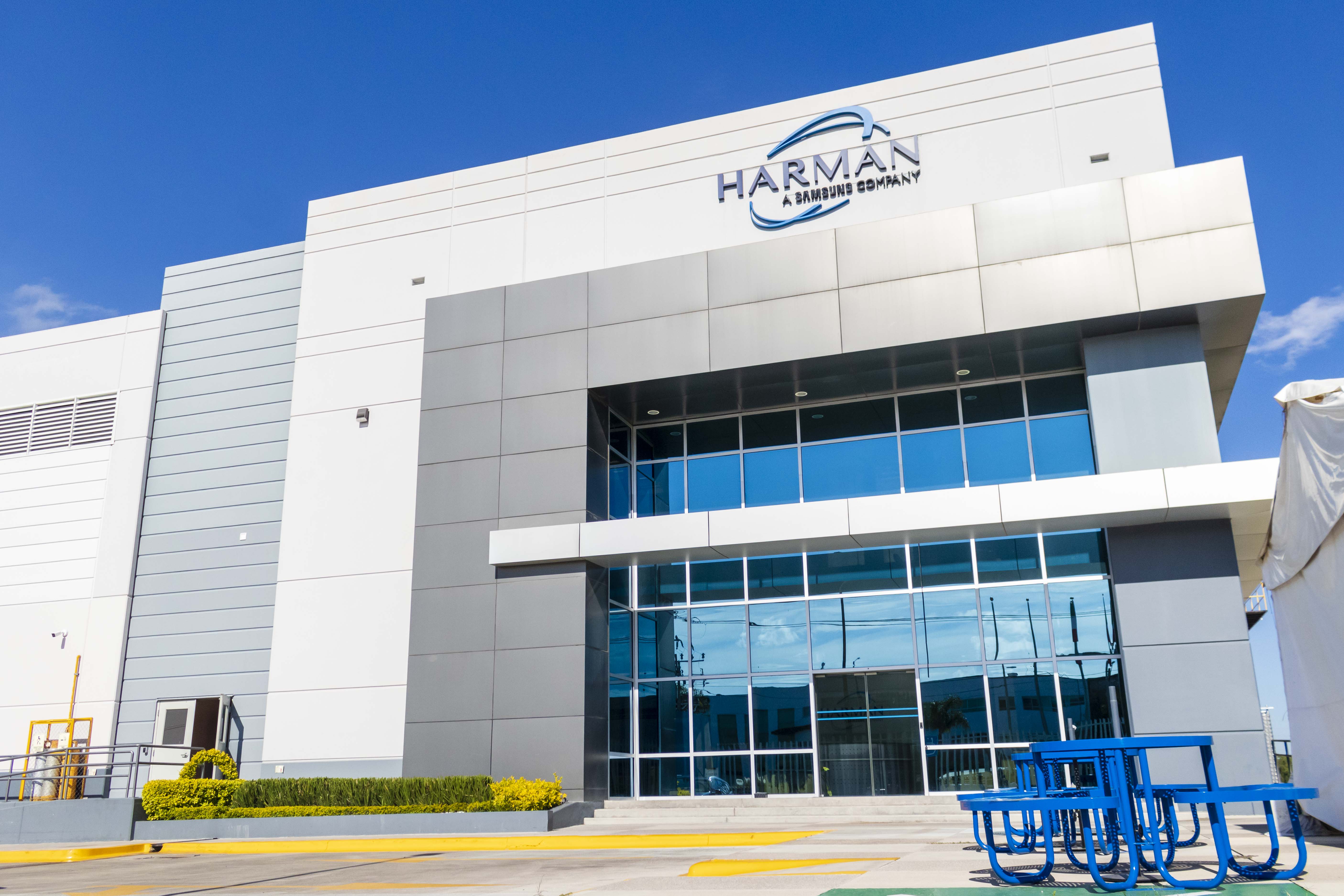
HARMAN continues to expand on-site renewable energy generation at key facilities. Solar panel installations at our Querétaro, Pune, and Juarez sites have generated between 6.7% and 15.8% of those locations' total electricity consumption in 2024. Additional solar expansion projects are being evaluated at Dandong, Suzhou, and Chonburi (Thailand).
We are expanding our use of Renewable Energy Certificates (RECs) to cover electricity usage across several major manufacturing sites. Our long-term vision includes directly sourcing renewable electricity where feasible, including solar and wind procurement strategies aligned with grid availability in North America, Europe, and Asia.

HARMAN's Manaus facility is leading our Zero Waste to Landfill initiative and achieved platinum UL2799 certification in 2025. All global automotive sites have been tasked with pursuing waste certifications as part of our company-wide circularity and waste reduction goals.
In parallel, water efficiency efforts are also underway: all Harman automotive sites globally have reduced their water intensity by 11% compared to the 2019 baseline. This is largely due to initiatives such as a closed-loop gray water concentration system that recycles more than 95% of the water used in printed circuit board (PCB) cleaning back into the production process, dramatically reducing freshwater usage. In addition, the sites have implemented further water reduction measures, including the optimization of air humidification systems and social water-saving initiatives.
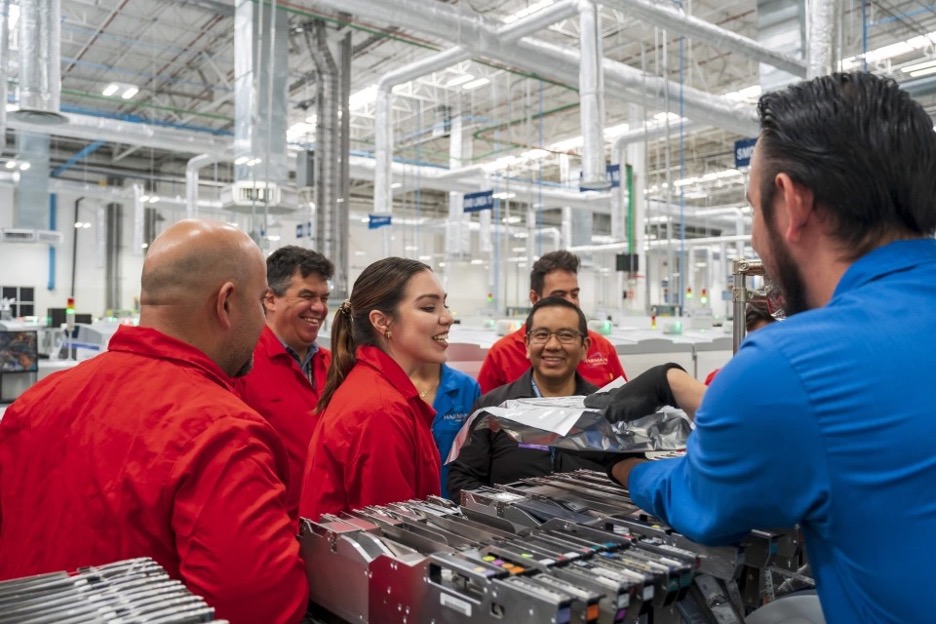
HARMAN's Querétaro facility is a leader in low-impact operations, guided by a dedicated sustainability council. They have achieved a 51% reduction in waste and a 35% cut in waste bags since 2019 through 23 resource efficiency projects. The site is on track toward 90% landfill diversion, supported by UL 2799 assessment, and has planted over 200 trees to enhance local biodiversity. Solar panels now provide 9% of electricity needs, while advanced energy systems and ISO 50001 training are embedding smarter energy management across operations. The facility also holds the RBA Factory Lead designation and maintains ISO 14001 and ISO 45001 certifications, reflecting its strong foundation in environmental and social responsibility.

In June 2024, HARMAN broke ground on a 47,000 m2 manufacturing facility in Laem Chabang, Thailand, designed to expand our automotive business and deliver next-generation in-cabin experiences. Developed with ESR Group, the facility aligns with Thailand's Bio-Circular-Green economy strategy and targets LEED Gold certification, the world's leading green building standard. Scheduled for completion in late 2025, it will set a new benchmark for responsible, resilient manufacturing in the region.
HARMAN is rethinking how we move goods to cut transportation emissions and strengthen supply chain resilience. We've updated our procurement processes and supplier criteria to prioritize low-carbon options, and we are working with logistics partners to pilot low-impact technologies and expand the use of cleaner transport modes.
In our Consumer Audio Group, we have significantly reduced transportation-related carbon emissions through a strategic shift from road to rail for key freight corridors. Additionally, we localized sourcing for our JBL EON700 plastic enclosures, avoiding an estimated 239 ocean shipping containers in 2024. These changes demonstrate how thoughtful logistics and procurement adjustments can yield tangible environmental results.

HARMAN's Shenzhen warehouse, managed by APL Logistics and supporting both the Professional and Consumer divisions, has been fully powered by renewable electricity since the third quarter of 2023. In Europe, our Professional division moved its operations from the Horsens, Denmark, warehouse to a cutting-edge DSV logistics center in October 2024. This new facility includes an array of advanced sustainability features and energy-efficient systems, highlighted by the world's largest rooftop solar installation. Additionally, the Consumer division has been working with the Arvato warehouse in Heijen, Netherlands, since 2019. With solar panels, the warehouse generates 10,000 MWh of electricity per year, which covers not just the facility's energy usage but also 3,300 households in the region.
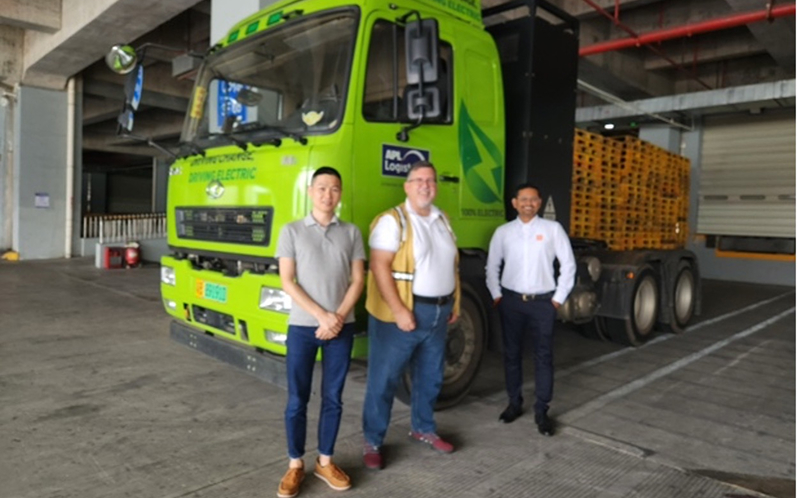
In our Automotive division, we are pioneering low-emission fuel options for global shipping. A Sustainable Aviation Fuel (SAF) pilot with Geodis for our Székesfehérvár Electronics manufacturing site avoided 4,297 tons of CO2e on the Shanghai-to-Hungary route. A Sustainable Marine Fuel (SMF) trial with Hellman for the Acoustics manufacturing site further reduced emissions by 16.96 tons of CO2e on the Vietnam-to-Hungary lane. In Shenzhen, we introduced electric trucks for first-mile transportation between the warehouse and the port, utilized by our Pro division. This initiative—executed with logistics provider APL Logistics—saved approximately 2 tons of CO2e in 2024.
Looking ahead, we are exploring broader adoption of electric trucks, intermodal logistics, and energy-efficient warehousing across strategic regions. These efforts are part of a growing ecosystem of responsible logistics practices designed to meet our Scope 3 emissions reduction target and deliver operational efficiency.

A circular economy mindset helps us minimize waste, conserve resources, and reduce embodied GHG emissions in our products and packaging. We are expanding the use of recycled fabrics, metals, and plastics across our product lines, phasing out harmful materials like PVC, and designing packaging that is both plastic-free and recyclable, whenever possible. In 2024 alone, 34 products used recycled fabric, 17 were PVC-free, and 29 achieved high repairability ratings.
We embed circular economy principles that are in line with global requirements into our product innovation by prioritizing durability, repairability, recycled and bio-based materials, low-carbon materials, recyclability, and eliminating potentially harmful materials. Our design approach emphasizes creating long-lasting and easy-to-maintain products, ensuring they remain in use for as long as possible. By selecting safer, more planet-positive materials, we aim to minimize environmental impact and enhance user safety. Additionally, we focus on optimizing product performance during the use phase, reducing energy consumption, and improving efficiency for everyday users.
We are actively incorporating recycled and bio-based materials into product design, with the dual aim of reducing carbon & environmental footprint while aligning with circular design principles. Our material innovation teams are piloting projects in low-carbon plastics, metals, and composites while maintaining product durability and performance.
To reduce packaging waste, we've launched a cross-functional initiative to shift toward plastic-free, recyclable, and compostable packaging. We are phasing out multi-material packaging and increasing the use of post-consumer recycled (PCR) content, especially in consumer product lines.
As part of our aspirational goal to eliminate industrial waste, we are enhancing waste tracking and diversion at all manufacturing facilities. Pilots for closed-loop recycling systems—such as reclaiming materials from returned or end-of-life products—are underway, particularly in Europe. We are also partnering with e-waste recyclers to ensure safe, responsible disposal and recovery of components.
HARMAN's Lifestyle division is taking concrete steps to embed sustainability into every aspect of our audio products. Since 2019, we have focused on product and packaging design for energy efficiency, responsible materials, and product longevity. Our commitment is ongoing: we set ambitious goals, measure progress, and continuously adapt our approach to drive meaningful change for our stakeholders and the planet.
Progress between 2019 & 2024
Since kicking off our sustainability journey, we've...

launched 15 products containing recycled aluminum

introduced 17 new PVC-free products

built 34 products using recycled plastics

seen 16 of our products included under Amazon's Climate Pledge range

used recycled fabric in 34 products

packaged 100 new products in carton sourced from responsible suppliers
Snapshot of positive progress in 2024

< 1 WATT
OF POWER
We dropped the amount of standby power used in new Wi-Fi products due for launch in 2025.

17 NEW PVC-FREE
PRODUCTS
These newly launched products are part of our phased approach to tackling potentially harmful materials.

> 7.0/10
RATING
On the 10-point Repairability Index, 29 new products ranked 7 points or higher.
Snapshot of positive progress in 2024
239
This is the estimated number of shipping containers we kept off the ocean in 2024! How? By localizing the sourcing of our JBL EON700 plastic enclosures. Small supply-chain change with a big impact.
50%
The volume of carbon emissions we reduced in the period by moving part of our freight transport mode from trucks to railroads.
12,798 kg
The estimated equivalent volume of CO2 emissions we reduced in the year by replacing the polyethylene air pillows used for void-fill packing with shredded recycled cardboard.
| Consumer Solution: Sustainability Feature |
 JBL JBL XTREME 4 |
 ONYX ONYX STUDIO 9 |
|---|---|---|
| PCR materials | 38% | 46% |
| Packaging | 98.2% natural fiber-based | 97.8% natural fiber-based |
| Easy-to-replace battery | YES | YES |
| Repairability index score | 7.4 out of 10 | 7.8 out of 10 |
| Cradle-to-grave carbon footprint | 39.9kg CO2e | 34.6kg CO2e |
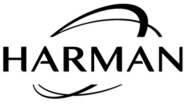 Our Journey Towards a More Climate Smart Future
Our Journey Towards a More Climate Smart Future
